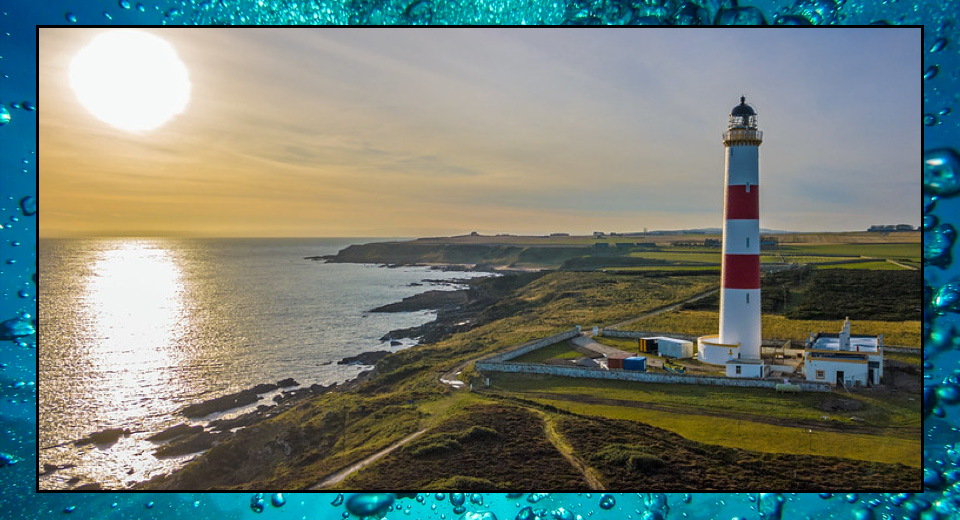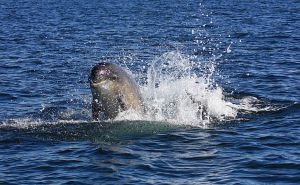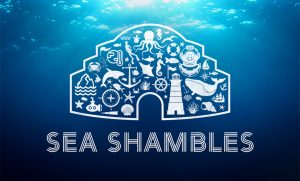Beacon in the Night by Erika Jones
Sea Shambles Advent Calendar - Day 16December 16th
Tarbat Ness Lighthouse is a beacon in the night.

For nearly a century, this optic from the Tarbat Ness Lighthouse, now on display at the National Maritime Museum, was a beacon to mariners travelling in Moray Firth, located on the North East coast of Scotland.

Tarbat Ness Lighthouse Optic, made 1891. On display at National Maritime Museum, Greenwich
Moray Firth is one of the best places on the British coast to watch dolphins and whales. The bay is home to about 190 bottlenose dolphins. These are some of the most northern dolphins in the world, who have been seen to roam as far afield as off the coasts of Ireland and the Netherlands.

Bottlenose Dolphin breaching off Moray Firth (Credit: Ellis Lawrence)
Saving Lives at Sea
The Moray Firth dolphins are beloved by tourists and locals alike, but the Tarbat Ness Lighthouse stands as a stark reminder of the fierce power of the North Sea. After a deadly storm tore through the Moray Firth in November 1826 and 16 vessels were lost, the government was forced to act. Four years later, the Tarbat Ness Lighthouse was completed and became a beacon in the night. The tower (41 m, with 203 steps) is the third tallest in Scotland and bears two distinguishing broad red bands. The lighthouse was engineered by David Stevenson, the founder of the famous Stevenson family of lighthouse engineers. Besides designing the majority of the nation’s nineteenth-century lighthouses, the Stevenson family also had a literary bent- David was grandfather to Robert Louis Stevenson of Treasure Island fame.
Despite the reassuring presence of the Tarbat Ness lighthouse, Moray Firth storms still claimed lives at sea. One of the worst maritime disasters in Scottish history occurred on 19 August 1848. A fleet of small fishing vessels were no match for a massive storm that claimed 124 boats and 100 lives that day.
The Cosmic Shambles Network relies on your support on pledges via Patreon so we can continue to provide great, new, exciting content without the need for third party ads or paywalls.
For as little as $1 a month you can support what we do and get some great rewards for doing so as well. Click the Patreon logo to pledge or find out more.
Using Powerful Optics
To improve the effectiveness of the lighthouse, Robert Stevenson’s grandson, David Alan Stevenson, designed this optic in 1891. What is special about this optic is that it uses Fresnel lenses that concentrate light into a powerful beam. Invented by the French physicist Augustin-Jean Fresnel, these lenses are hollow, lightweight and feature a distinctive ‘stepped’ surface. As the light passes through the lens, the light rays are bent into a parallel beam. Fresnel lenses are still used today and are commonly found in car headlamps. Using this optic technology to boost the power of paraffin lamps, the Tarbat Ness Lighthouse was visible for a range of 24 miles. A clockwork mechanism rotated the optic, so that the light appeared to flash every 30 seconds, making it easier for sailors to distinguish Tarbat Ness and establish their position along the coast.
Lastly, this optic reveals another story within the Stevenson clan. This light was installed in 1892, the same year that David’s daughter, Dorothy Emily Stevenson, was born. Dorothy went on to become a successful author of novels in World War II, and penned over forty books until her death in 1973. The Tarbat Ness light optic that her father designed continued to shine over the Moray Firth throughout her lifetime, until it was replaced in 1985.
The light optic can be seen today near the main entrance to the National Maritime Museum, Greenwich, a beacon of ingenuity, optic beauty and reminding us of the power of the sea.
(Main Pic credit: Anthony Round)
See what lies behind all the windows of the Sea Shambles Advent here.
 Sea Shambles is a one night only live extravaganza celebrating the oceans. Hosted by Robin Ince and Helen Czerski with Steve Backshall, British Sea Power, Josie Long, Lemn Sissay and more it’s a night of science, comedy, music, lasers and more in which we’ll be turning the Royal Albert Hall into an underwater playground the likes of which you’ve never seen! May 17 2020. Tickets start at just £10! Book here.
Sea Shambles is a one night only live extravaganza celebrating the oceans. Hosted by Robin Ince and Helen Czerski with Steve Backshall, British Sea Power, Josie Long, Lemn Sissay and more it’s a night of science, comedy, music, lasers and more in which we’ll be turning the Royal Albert Hall into an underwater playground the likes of which you’ve never seen! May 17 2020. Tickets start at just £10! Book here.

Erika Jones is the Curator of Navigation at Royal Museums Greenwich. World Oceans Day at the NMM is on 8 June, and this year our theme is ‘positive activism’, as it’s now more important than ever before to raise awareness about the marine environment and to campaign for fast and collective action in order to save our planet.
If you would like to reuse this content please contact us for details
Subscribe to The Cosmic Shambles Network Mailing list here.
The Cosmic Shambles Network relies on your support on pledges via Patreon so we can continue to provide great, new, exciting content without the need for third party ads or paywalls.
For as little as $1 a month you can support what we do and get some great rewards for doing so as well. Click the Patreon logo to pledge or find out more.

